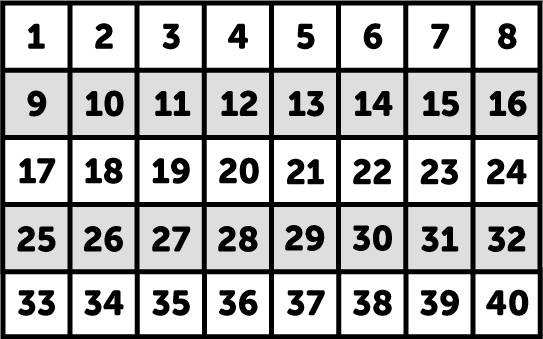Where’s Mully?
How to play:
Where’s Mully??? The objective is to find which number Mully is hiding behind. The player is given a range of whole numbers (for example from 1 to 40) and asked to find which of these numbers Mully is hiding behind. However, the player is also told that Mully is hiding behind the highest multiple of a certain number which they are also given (for example, they might be told Mully is hiding behind the highest multiple of 3). So, for example, if Mully is hiding behind the largest multiple of 3, without going past 40, he must be hiding behind 39.

Have a look at these numbers from 1 to 40. Mully is hiding behind the biggest multiple of 3 here! Can you say where he is hiding?

Three Questions
There are three questions that support the ‘Where’s Mully?’ concept and they are:
1. Where is Mully hiding?
This extends multiplication skills and leads the child into a process for solving division. This is really a disguised division question (39 ÷ 3). In the example above Mully is hiding behind 39, which needs to be identified if it were positioned as a division question.
2. Which multiple is it (the 1st, 2nd, 3rd etc) and how do you know?
This provides the answer to the actual division question. In the example given above it is the 13th multiple, i.e. the division answer is 13… and it is probably ascertained by knowing 30 is 10 lots of 3, leaving 10 more which can accommodate another 3 lots of 3.
3. What is the gap from where he is hiding to the largest number possible?
This is the remainder (in this case we are looking to find the gap from 39 to 40, which is 1). Once children have become fluent with finding Mully and answering these 3 questions, then we can move the same number skill into the context of actual division questions.
‘Where’s Mully?’ has a jingle that can be played as the game is introduced and it has a 5 step progress drive that can be shared with children.
